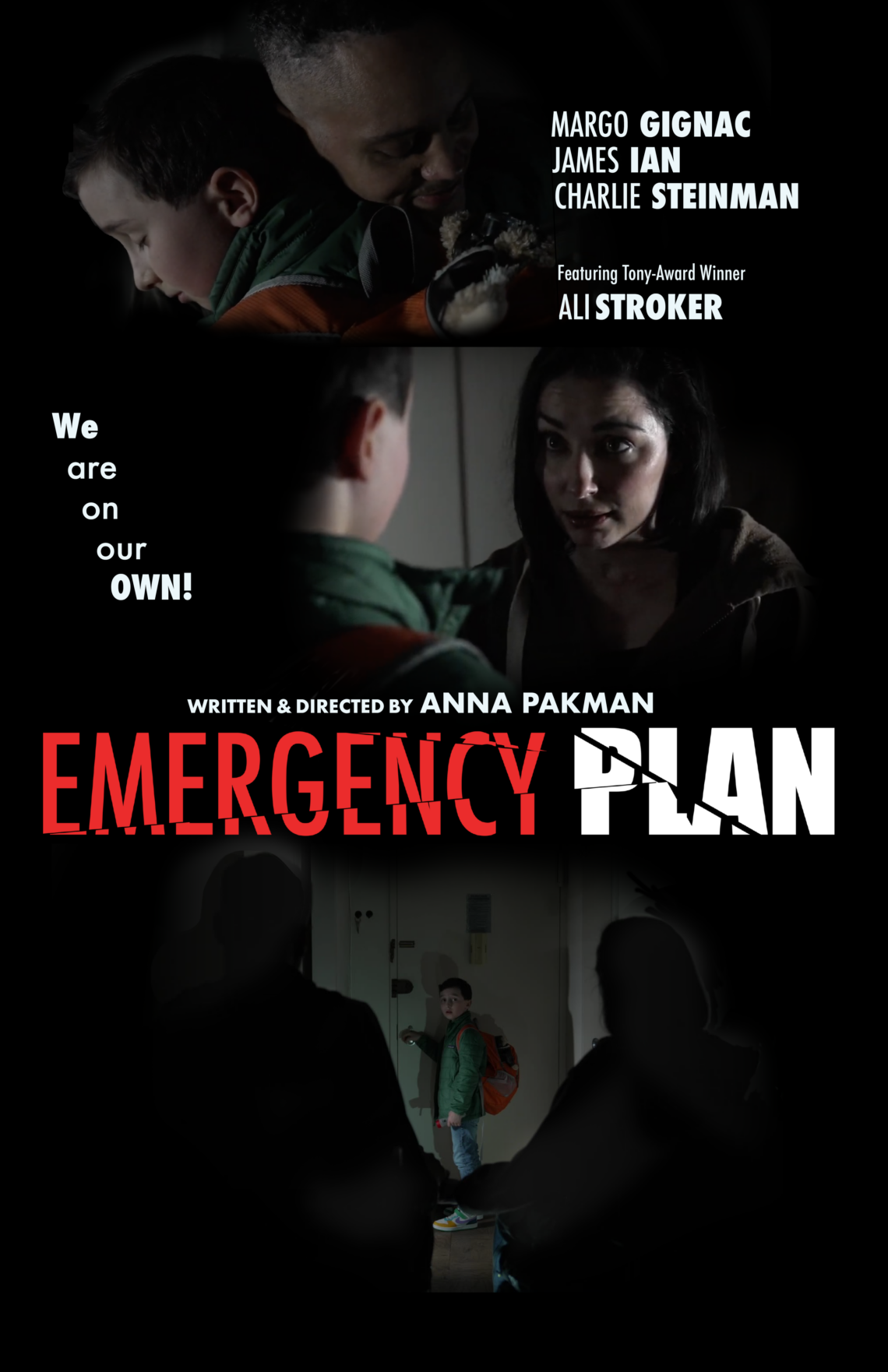When a major catastrophe hits, most parents would do anything to get their kids to safety. But what happens when the very systems meant to help—emergency alerts, evacuation shelters, emergency responders—simply don’t account for you?
That question is at the heart of Emergency Plan, award-winning filmmaker Anna Pakman’s latest entry into the Easterseals Disability Film Challenge. The five-minute thriller centers on a disabled couple forced to make an unthinkable decision: send their young son to safety alone, after realizing that help isn’t coming for them. It’s a scenario ripped straight from the worst fears of many disabled households—and grounded in real, lived experience.
 “In emergency planning, disabled people are often invisible,” Anna says. “Even though we’re statistically more likely to be impacted, especially in a crisis.” Anna, who has cerebral palsy, followed up with. “You learn very early that you’re on your own,” she says. Emergency Plan brings that fear to the screen.
“In emergency planning, disabled people are often invisible,” Anna says. “Even though we’re statistically more likely to be impacted, especially in a crisis.” Anna, who has cerebral palsy, followed up with. “You learn very early that you’re on your own,” she says. Emergency Plan brings that fear to the screen.
The film features a powerhouse performance by Tony Award-winner Ali Stroker in a voice-only role as a radio reporter delivering haunting updates about the outside world. “The radio becomes the suspense device,” Anna explains. “It’s the only way the characters get updates. And every update makes the situation worse.” As time ticks by, the tension mounts—not through explosions or chase scenes, but from a very human, very urgent question: what would you do if no one was coming to help?
True to her ethos, Anna assembled a cast and crew with authentic disability representation. “Our lead actors on screen share the disabilities of their characters,” she notes. “And we made sure our set was accessible and inclusive behind the scenes, too. If we’re going to tell these stories, we have to live our values.”
 Playing the central couple, James Ian and Margo Gignac bring a deep emotional authenticity to the roles of Eddie and Jasmine, whose desperation unfolds in real time as the radio crackles with ominous news. Their lived experience adds layers of realism to their portrayals. “They gave everything to these performances,” Anna says. “The pain, the urgency, the love—they made it so real. The film happens about a disaster and has this global message, but also a more intimate feeling as it centers the relationships between the family and speaks to who we are when the going gets tough. Jasmine’s response is to be the ultimate doer and Eddie kind of disassociates. I think that’s so true to life and a metaphor for how the world deals with difficult problems. And it’s probably why they don’t get solved.”
Playing the central couple, James Ian and Margo Gignac bring a deep emotional authenticity to the roles of Eddie and Jasmine, whose desperation unfolds in real time as the radio crackles with ominous news. Their lived experience adds layers of realism to their portrayals. “They gave everything to these performances,” Anna says. “The pain, the urgency, the love—they made it so real. The film happens about a disaster and has this global message, but also a more intimate feeling as it centers the relationships between the family and speaks to who we are when the going gets tough. Jasmine’s response is to be the ultimate doer and Eddie kind of disassociates. I think that’s so true to life and a metaphor for how the world deals with difficult problems. And it’s probably why they don’t get solved.”
Behind the camera, the team was stacked with both returning collaborators and new talent, with and without disabilities. New to Pakman’s crew was director of photography John Floresca, a full-time wheelchair user who shot the picture from the same perspective as the characters. “We shot this in just one day, with a child actor, in a small New York City apartment we had to make work with four wheelchair users playing our own version of Tetris,” Anna laughs. “It was intense. But the performances, the production values, the emotional stakes—it all came together in a way that I’m really proud of.”
For Anna, participating in the Easterseals Disability Film Challenge has become an annual creative proving ground. Last year’s comedy Wheelchair Money tackled insurance discrimination and mobility access with heart and humor. This year, the shift to suspense feels natural. “Disabled people live in suspense every day,” she says. “Will the elevator work? Will paratransit show up? Will the ER treat us with respect? That’s real tension. That’s the thriller.”
Still, Emergency Plan isn’t just a warning. It’s a call to action—for policymakers, emergency managers, and communities to do better. “We need inclusive emergency plans. And we need to stop treating disabled people like an afterthought.”
At the heart of it all is Riley, the couple’s son, who represents both the innocence at risk and the hope for the future. “Riley is coloring a ‘Protect Disability Rights’ cartoon in the opening scene,” Anna shares. That’s what this is really about. “It’s a reminder that this isn’t abstract. There are real lives at stake.”
And that, perhaps, is the film’s most suspenseful—and human—question: When the world falls apart, who gets left behind?
Read more Celebrity Interviews on ClicheMag.com
Anna Pakman’s “Emergency Plan” Illuminates the Added Peril of Disability in Disaster. Photo Credit: Courtesy of Anna Pakman.


